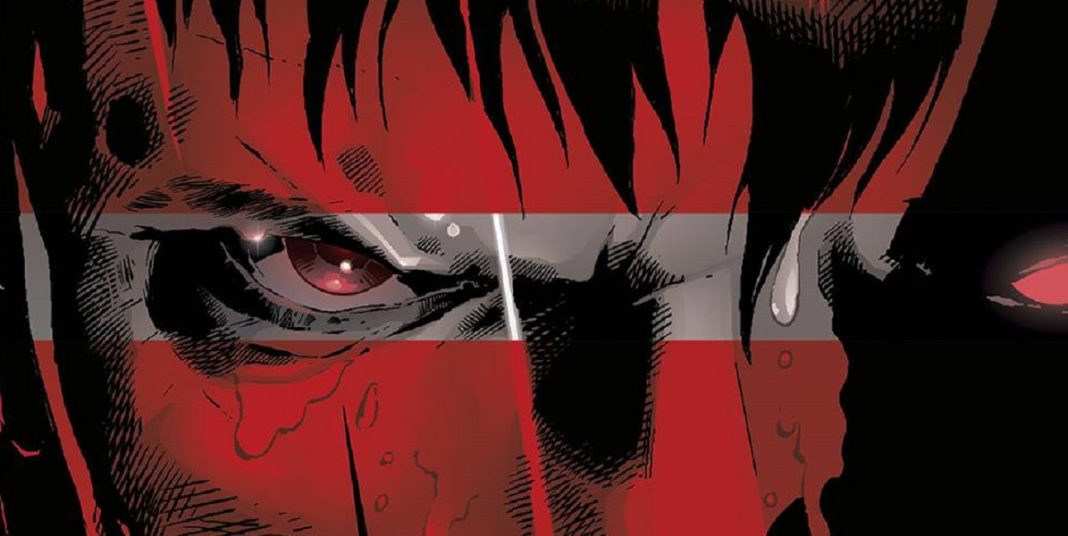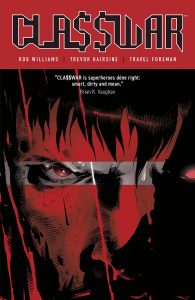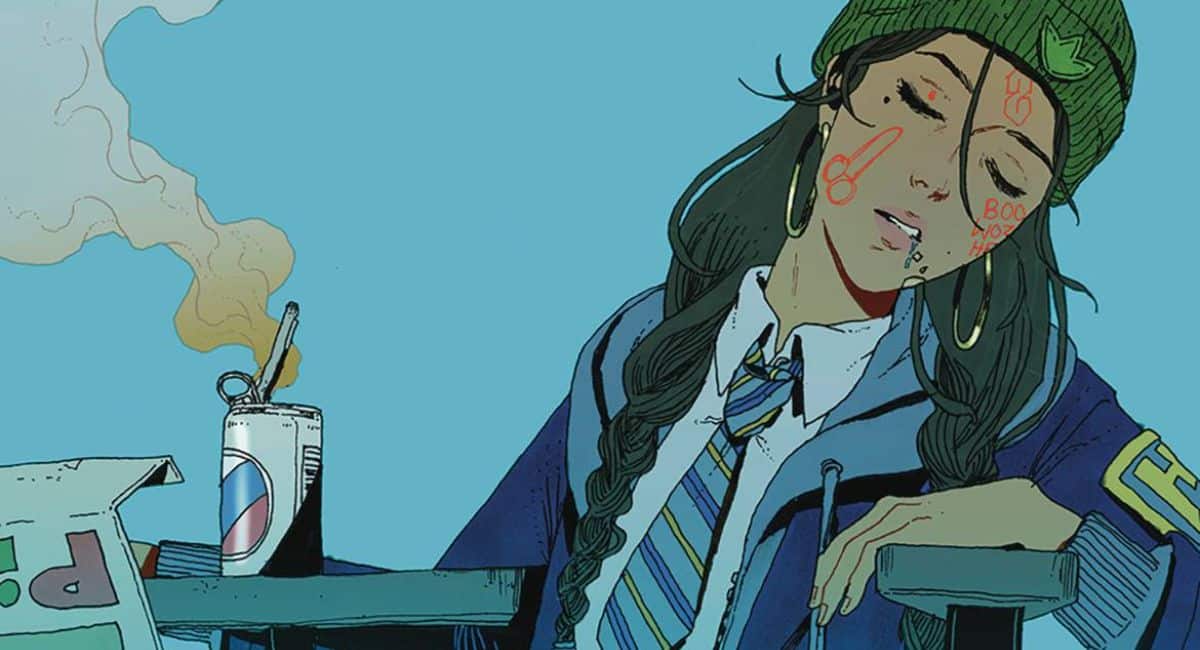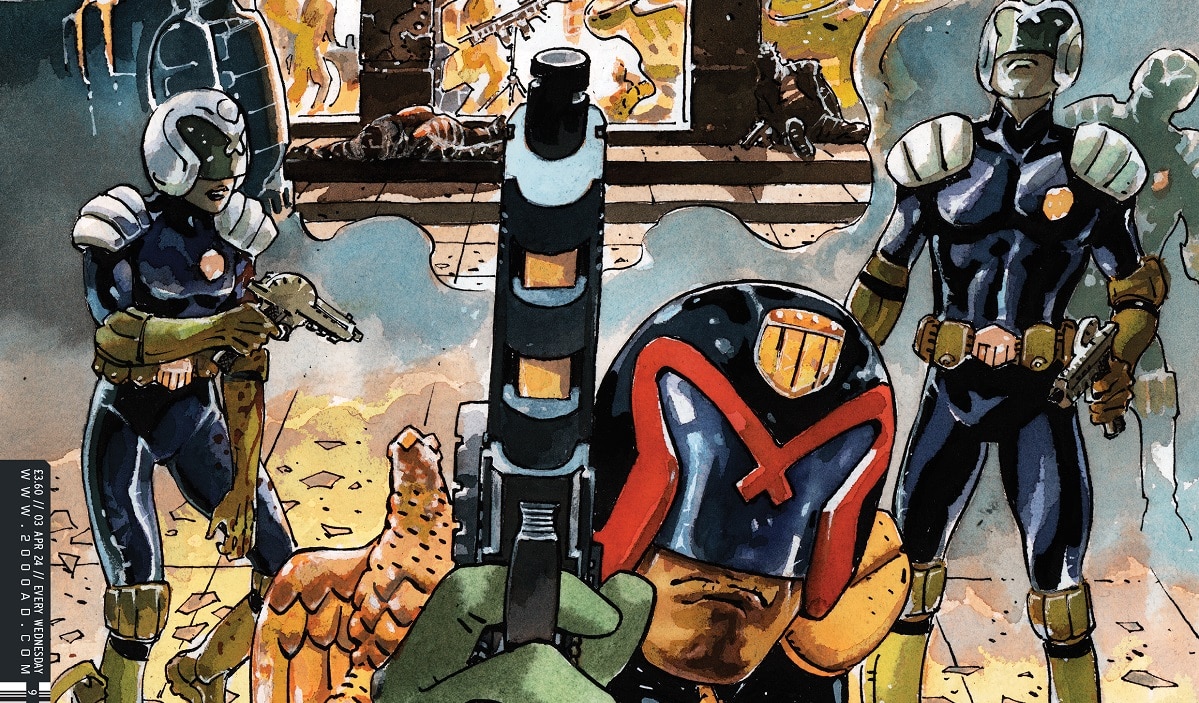 Classwar TP
Classwar TP
Writer: Rob Williams
Artists: Trevor Hairsine and Travel Foreman
Colorist: Len O’Grady
Letterer: Ed Deighton
Publisher: Image Comics
At a glance, Classwar is a political-superhero-war story with pensions for sex and ultra violence that can feel reminiscent of The Boys, but I would venture to say more thoughtful in its critique. American, a “hero” made to fight on behalf of American interests alongside other super soldiers on the team Enola Gay, sees the failures of America, and it shakes his patriotism to the core. American feels motivated to expose the evils of his country while still clinging to its ideals.
American is juxtaposed by his partner Isaac, a Black man who he is reluctant to work with but does so out of necessity. While Isaac is given the room to explore his motivations and story, he can feel at times like he has fallen into the “magical negro” trope. Isaac is already well aware of the failings of America as a Black man while American is being given Isaac’s insight and pointed in varying directions with Isaac’s knowledge. With the potential for this trope, it is understood that American is our protagonist, and as he wakes up to America’s many evils, he can function as a white savior, taking it as his responsibility to right America’s wrongs. As the story explores the systems and ways in which they are utilized, it engages with race and class and can stumble a bit though it is apparent that writer Rob Williams was well intentioned as he crafted this narrative and the critiques made are valid as he critiques political positions, the drug epidemic, and foreign intervention in the name of “freedom.”
On American’s journey, he gets into violent interactions, one of which where he punches off the jaw of one of his former teammates who, like the others, are pretty content to abuse their power and do the bidding of the government. There is an inherent critique of power here through Enola Gay; these are people that feel a sense of entitlement and access, heightened by their powers and it feels telling that all but one of them are white. This is elevated by the origins of the super soldier program here and it’s Nazis. Of course it’s Nazis. This works to the ideas of white supremacy that are at play in these racial critiques and power structures. Enola Gay’s power is affirmed by their superpowers and the feeling of superiority they have over “humans” as this difference is pointed out explicitly on page 74 during a tense exchange between Icon and her previous sexual partner. Capitalism and consequently white supremacy, as structures, only function when there is a hierarchy and in this, someone has to be on top. The Black member of the team is characterized as a sellout. He is beyond the point of being in the struggle yet continues to oppress the Black community with crack and cocaine that he is responsible for moving and protecting on the government’s behalf. He holds himself out as someone that made it out but he only made it out through harm and violence and even after, continues to facilitate harm and violence not only within his community but on people of color outside of America’s borders.
It is a challenge to tell an anti-war war story and further still, to utilize superheroes in this because there is supposed to be a spectacle to seeing them in action but, with this story being a critique it has to toe a line and visually, artists Trevor Hairsine (pages 3-82) and Travel Foreman (pages 83-154) deliver on blending the spectacle and horror in these obvious violations of the Geneva Conventions. Both artists bring something different to the art where Haisine has a very heavy use of spot blacks, Foreman’s linework has a pencil quality and they both shine in different regards while approaching the story and its characters. Across both, they give the room within their panels to sit with the carnage, placing their cameras intentionally to control mood and pacing even when we hit particularly grotesque and gruesome moments. The color work of Len O’Grady is a testament to his versatility in being able to adapt to the styles of both artists while keeping the tone of the book. The colors elevate the art in Classwar across the board making the book a visual treat to read as long as you have the stomach for the violence and body horror. Tying the words to the images are the letters of Eddie Deighton who gives voice to the characters and distinction between caption boxes and balloons. The balloons used for technological communication didn’t quite work for me as well as his other lettering work throughout but it was different and a clear visual indicator of where a voice was coming from. There wasn’t a moment of questioning who was speaking throughout the book and it helped keep a clear focus from moment to moment.
Classwar is a mature superhero story with a lot its trying to say about American institutions and the creative team works well together to play between horror and spectacle.
Read a new entry in the Trade Rating series every Thursday at The Beat.
A new edition of Classwar (or Cla$$war) was published in August 2023 and is now available.










